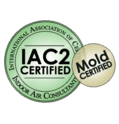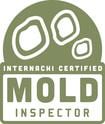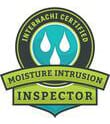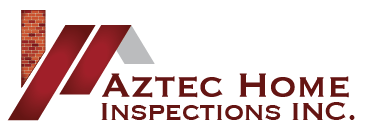Mold Testing
Sample Mold Assessment Report
This sample Certified Mold Assessment Report is from an actual mold assessment conducted by Aztec Home Inspections Inc. We have removed all client data and changed the report cover photo; all other comments and pictures represent the mold assessment service we provide. Sample Report
Reasons To Collect Samples Of Possible Mold
Reasons to Collect Samples of Possible Mold
• To set a baseline air concentration for the tested area and to compare air concentrations before and after mold remediation.
• To prove or disprove that a Condition 2 area has resulted from mold proliferation from a Condition 3 area.
• To determine the type of mold species present in the air and on surfaces at the time of collection.
• To obtain the known health implications of each identified mold species present in/on the collected samples.
• To obtain information from a microbiologist that could be used by a physician to determine if the present mold species collected in the samples correlates to the mold toxins found in medical lab testing.
• To verify that a containment breach did not occur during mold remediation (post samples), to verify that Condition 2 and 3 areas have been returned to Condition 1 and to confirm that Condition 1 areas did not become contaminated during the mold remediation process.
Mold Growth Conditions 1, 2 and 3
Mold Growth Conditions
Condition 1: Per IICRC S520: (normal fungal ecology): an indoor environment that may have settled or air-borne mold spores or fragments, or traces of actual growth and constituents (e.g. extracellular material (ECM), hyphae, mold fragments), that are reflective of a clean and dry indoor environment.
Condition 2: Per IICRC S520: an indoor environment including surfaces and air, which is contaminated with residual mold biomass from a known Condition 3 source in that same indoor environment. This includes spores and fragments, filaments, or extracellular material (ECM) from sporulation, sloughing, or production of other compounds (eg. mycotoxins and microbial volatile organic compounds (mVOC’s). “A Condition 2 can only be confirmed or rejected by sample collection”.
Condition 3: Per IICRC S520″ (actual mold growth): an indoor environment contaminated with the presence of mold growth that is active, dormant, dead, non-viable, visible, or hidden.
Mold growth in Condition 2 areas typically does not have visible mold growth. It’s an environment that has been contaminated with mold spores transported by air currents, including those from central heating and cooling systems, from a Condition 3 environment. Collecting air and swab samples is the only way to determine if a Mold Condition 2 environment exists.
Air Purification Anti Microbial Filters
Virginia Code Change and Mold Growth
The Virginia Department of Health set a standard for Virginia around 2020, and the Department of Professional and Occupational Regulations (DPOR) followed up on July 1, 2022, and issued Virginia Code 55.1-703. On July 1, 2024, the Virginia Consumer Protection Act was modified to include a mold certification requirement. Mold assessments must be conducted before mold testing and performed by businesses that are certified for conducting mold inspections. The EPA guidelines can be found in A Brief Guide to Mold Moisture and Your Home, Mold Remediation in Schools and Commercial Buildings, also used for a residential setting, and Should You Have Your Air Ducts in Your Home Cleaned. To view the IICRC guidelines, one must purchase the IICRC S520 Standard For Professional Mold Remediation.
Don’t get taken advantage of by mold inspectors and testers who come into the property and just collect air and surface samples. Many may even ask the homeowner or property owner where they have seen mold growth so the mold inspector or mold tester can collect a sample from that location. This mold inspection service raises some very important questions.
- Who is the professional, and why are they being paid?
- They were called for their expertise; why are they asking their client where the mold is?
- Should they not look for it? Is it their job?
- After all, it’s why they are being paid.
Mold Testing versus Mold Assessment and Testing
Most Virginia home buyers are unaware that Virginia does not require home inspectors to tell potential home buyers about mold, even if they observe it during a home inspection. Though home inspectors do not have to report mold to potential buyers, if they do choose to do so and do not meet the current Virginia code, they must refer their client to an Indoor environmental professional (IEP) who does. Aztec Home Inspections Inc. is a Certified and Insured IEP Company.
Mold Testing
Mold testing that only consists of a visit to the property that only lasts about 45 minutes, collecting samples as directed by the property owner, or from a home inspection report is not the proper procedure for conducting a mold assessment and collecting mold samples. This procedure will provide wildly inaccurate results, and the property seller/owner may end up paying for unnecessary mold remediation, or the home buyer may move into a home with a severe mold problem.
Testing is only a part of the process and can give inaccurate results that lead to erroneous advice.
Mold Assessment and Testing
A mold assessment is a complete evaluation of the property to discover where visible mold growth is located and to understand why mold growth is present. A proper mold assessment will take 1.5-2 hours to complete and will include a mold assessment report, a certified lab report, and mold remediation/sanitization protocols. Sample collection locations are based on the assessment findings, thus establishing testing protocols that are not directed by a possible biased party and do not overlook other mold-contaminated areas in the home. Removing mold growth without stopping the cause, only treats the symptom, if the cause of mold growth is not removed the mold growth will return in a very short time, in as little as 24-48 hours. A mold assessment provides direction on stopping the cause of the mold growth, direction in mold remediation/sanitization and does not just address the symptom of the underlying problem. Fix the cause, remove the mold, maintain a low relative humidity environment and never pay again.
What Is a Mold Assessment?
A mold assessment provides the client, home buyer, home seller, and landlord with actionable information. Important information about mold, such as where water intrusion is occurring or if a potential point of water intrusion exists, where plumbing leaks, condensation leaks, or roof leaks are located, where the mold growth exists, and what you should do next. The simple process of collecting mold samples only provides you with the lab report, and without the mold assessment, there is no actionable information. So, mold testing alone should not be used to decide the mold condition of any property.
A mold assessment evaluates the exterior of the property to locate and identify potential or existing points of water intrusion. Inadequate grading around the property clogged and overflowing gutters, missing gutters, no downspout leaders, roof leaks, openings in the siding, and cracks in the exterior sealant are all potential or existing water intrusion points.
The property’s interior is evaluated for plumbing, roofing, condensation leaks, and verifiable water intrusion points. During the interior mold assessment, walls, ceilings, cabinets, and furniture are investigated for a fuzzy substance that stands off the surface. However, this does not mean that the substance is mold. Relative humidity readings should be taken at various areas and levels of the property. The HVAC system is evaluated by removing floor registers to view down the branch ducting as far as possible, assessing the air registers for the presence of fuzzy growth, considering the cleanliness of the air filter, and removing the air handler access cover to evaluate the inside of the air handler for the presence of mold growth.
The crawlspace, unfinished basement, cellars, and attics are evaluated for water intrusion, humidity buildup due to a lack of ventilation, water intrusion or plumbing leaks, and mold growth.
Once the mold assessment is complete, the mold inspector/tester can begin to understand the property in terms of water intrusion, humidity buildup, and the observable presence of mold growth. This information is then used to determine where to collect mold samples and whether and why the property has a mold problem.
As the mold samples are being collected, they should be immediately labeled with location and photographic documentation. The mold samples should be shipped to a lab certified by the American Industrial Hygiene Association (AIHA) or the American Conference of Governmental Industrial Hygienists (ACGIH) as soon as possible.
When the mold test lab report is received the mold assessment report and mold remediation and/or mold sanitization protocols are produced. The mold assessment, mold remediation, and/or sanitization protocols along with the certified mold test lab report are delivered to the client.
Why Mold Testing Alone Should Never Be Accepted
Mold spores are present in every indoor environment in varying concentrations and they are present in the outside air in varying concentrations. Indoor relative humidity will impact mold growth and when the relative humidity is less than 60% mold growth goes dormant and stops growing. The amount of vegetation around a home can increase outdoor air concentrations while snow covered ground can reduce the outdoor air concentrations.
If the roof leak or water intrusion that caused the mold growth to form has not leaked in a while, the mold will stop growing and this reduces the air concentration. Mold testing by itself cannot determine if there is mold growth in the attic, in the basement, in the HVAC system or how much is there. Therefore, the testing result can be misleading and provide a false negative or a false positive.
Because now covered ground can result in a low outside air concentration and present a finding of elevated indoor air concentrations and lead to a conclusion the home has a mold problem when actually there is very little visible mold growth.
Mold must have 60% relative humidity to grow. So, if relative humidity inside the home is less than 60% or the mold growth is a result of intermittent water intrusion, an intermittent plumbing leak, or a roof leak it will go dormant and stop sporulating (growing and putting off mold spore) when the water source stops. This action reduces the mold concentration in the indoor air, thus showing low mold spore concentrations in the indoor air resulting in a determination from the lab that the property does not have a mold problem. On the other hand, there may have been high winds or current or recent rain that lowered the outside air concentration resulting in a determination from the lab that the property has a mold problem, but had no visible mold growth. This is why a mold assessment is so important. Sampling is a part of the criteria used to determine if a property does or does not have a mold problem; the assessment is the other piece of the puzzle. Without the mold assessment, the lab report is just paper with words and numbers.
Simple mold testing without understanding the inside and outside environment that is being tested will provide misleading and inaccurate results. The EPA, CDC, AIHA all conclude that a mold assessment must be conducted before testing. In July 2022 the Virginia Department of Professional and Occupational Regulations concurred when the y enacted VA Code 55.1-703
Relative Humidity is Your Enemy
Because mold spores are naturally in the air both inside and outside, the only way to prevent indoor mold growth is to control the relative humidity and keep it below 60%. Mold growth cannot be prevented if the relative humidity is not kept in check or if water intrusion sources and other water leaks are not corrected. Mold remediation and/or mold sanitization is a waste of money if you do not address the water/moisture sources to prevent future water intrusion and mold growth.
EPA Mold Testing
We have heard countless times, “The EPA says mold testing is not necessary’ yet the EPA has made it clear since 1997 that there are times when testing mold is the next best step. Most cases (most being the keyword) are not all cases. So, what determines when mold testing is necessary? When buying a home that you have spent very little time in, and the property has more than ten SqFt of a mold-like substance or mold-like growth in the HVAC system, testing would be necessary. It is just wise to test. Until you have spent a few days to weeks in the property, you do not know how the mold growth will impact your health. Did you know the EPA recommends shutting down HVAC systems until the substance is identified? That’s because HVAC systems will spread mold spores throughout the entire property. The cost of mold remediation/sanitization can be high; it’s better to know the cost before you buy.
We have heard this on serval occasions “How do you know it’s mold if you didn’t do any testing?” On one hand, the selling side has a point looking at a questionable substance and calling it mold, or saying it’s not mold is ludicrous. Mold can only be identified under direct microscopic examination. As a seller, I would not want to face the cost of mold remediation/sanitization unless it has been proven by a certified lab that the substance is mold. On the other hand, saying the EPA says mold testing is not necessary can be due to a lack of knowledge of the subject matter or intentional. Remember, you will be the one living there.
It’s also clear that an assessment of the property must be conducted before samples are collected and a sampling plan is formulated. The purpose is to determine if a mold colony is sporulating and how far the mold spores are traveling. There can be a mold colony in the basement that is growing and through air currents, the mold spores can reach the top-floor bedrooms. Without the assessment and proper testing, this knowledge would not be obtained. It’s very important to know there is a high air concentration of mold spore in a bedroom that has no visible mold growth. It’s important to understand where the mold spores are coming from and why the mold growth is present. Without that information, you cannot adequately clean the property and reduce the mold spore air concentration.
Harrisonburg Mold “Black” Mold Testing
An abundance of mold spores in your home can negatively affect your health, even dead mold spores! Occupants with allergies, asthma, and other health issues are more susceptible, but mold spores active, dormant, or dead can affect anyone. Some molds can cause serious health issues and should only be removed by professionals. If you have mold growth or think you have a mold problem, Call Aztec Home Inspections Inc. and schedule your Certified Mold Assessment and Testing today! Protect your health and your home!
Mold Spores Are Everywhere
There has been a lot of media hype over “BLACK MOLD.” The issue is mold can be many colors, and just because it’s black does not mean it’s BLACK MOLD. The black mold that the media refers to is Stachybotrys chartarum, a dark, dark green color, not black. Stachy, for short, has been linked to many health-related issues, from respiratory, immunological, and neurological to etiological. With mold being many colors, the only way to know the species is to test it. However, other common indoor molds like Penicillium/Aspergillus and Chaetomium can also impact an individual’s health. Testing is the only way to know the mold species and air concentration.
Although, mold spores are everywhere, and their purpose is to aid in the breakdown and decay of organic matter, you do not want it growing in your home, and you do not want high indoor air concentrations.
Get a true mold assessment and testing, as well as real guidance on mold remediation and the cause of mold growth!
EPA’s Advice On Mold Growth
The EPA, CDC, WHO, and AIHA make it very clear.
“Spaying to kill the mold is not enough; even dead mold spores can cause an allergic reaction.”
“ALL MOLD GROWTH MUST BE REMOVED”.
There is no gray area here. If the mold growth is not completely removed, you will have immediate mold recontamination, and live mold growth can also remain after spraying and fogging.
We have been called to many homes after spraying and fogging, collected samples, and sent them to the lab for culture. Out of all the times, the lab grew mold from the samples 100% of the time. The client spent money to resolve the mold problem, only to find that the issue remained.
The mold growth must be removed. If the material on which it is growing cannot be cleaned, it must be removed and replaced with new material.
Fogging Does Not Remove Mold Growth! BEWARE!
The fogging method is not accepted across the industry and is known as the “spray and pray method.” It does not kill 100% of the mold spores and does not fully penetrate the mold growth. Therefore, it only kills (does not remove) mold spores floating in the air and only does so for a short time. Per Chapter 1, Lesson 7 of the EPA Mold Course, even dead spores may cause an allergic reaction and other health issues in some individuals. Killing the mold is not enough; all mold growth must be removed. The fogging method does not remove mold growth, so it is not an industry-accepted practice.
If you have had mold fogging and want to know the condition of your home’s indoor environment as it related to mold, give Aztec Home Inspections Inc. a call and set up an appointment to have your home evaluated.
Take Action To Prevent Mold Growth
Check all bathroom vents, dryers, or any other moisture-producing sources. Ensure they are venting to the exterior of the home. Air conditioning systems are a great way to add humidity, and dehumidifiers remove humidity. Increased ventilation can assist in reducing humidity levels, especially in attics of older homes and crawlspaces. When a water leak or water intrusion occurs, clean up the water and furnishings within 24-48 hours to prevent mold growth. Clean mold off hard surfaces with water, baking soda, hydrogen peroxide, or white vinegar, and force dry immediately and completely. Absorbent materials such as moldy ceiling tiles, insulation, and drywall may need to be replaced. Don’t install carpeting on concrete floors when there is frequent moisture intrusion or condensation build-up.
Mold Exposure Symptoms
Symptoms of mold exposure can include but are not limited to sneezing, conjunctivitis (pink eye), chronic cough, runny nose, nasal congestion, itchy, watery, and red eyes, skin rashes, and hives, sinus headache, rhinitis (inflammation of the sinuses), bronchitis, asthma, hypersensitivity pneumonitis, difficulty breathing. You may have one or more of these symptoms, but that does not mean you have an indoor mold problem. Other conditions must be present, and a thorough Certified Mold Assessment should be conducted to determine if mold growth is present, the type (species) of growth, and if water/moisture intrusion points and water leaks exist.



